BY ANDREW BERMAN | Nearly everyone seems to agree that 388 Hudson St. is an appropriate place for new affordable housing. But through a series of broken promises, ignoring feedback, woefully inaccurate information sharing and a thumb-on-the-scale “public engagement” process, the city and other key players have turned what should have been a smooth-sailing process to one mired in controversy and contention.
As many recall, in the 1990s a parking lot at 388 Hudson St. (at Clarkson Street) was acquired by the city to build the city’s Water Tunnel No. 3 underneath, a 20-plus-year project at the end of which the site was promised to the community — one of the most park-starved per capita in the city — as a public park.
Fast-forward to the late 2010s, and in a sudden turnabout with little discussion with the affected community, Community Board 2 decided to offer 388 Hudson St. to the city for affordable housing development, in an attempt to save the Elizabeth Street Garden in Little Italy from plans to build affordable housing there. The city didn’t take the bait, and moved ahead with housing plans for the garden site anyway, but took Community Board 2’s offer and transformed it into a commitment to build 100 units of affordable housing on 388 Hudson as part of a side agreement for the Soho/Noho/Chinatown Upzoning + Displacement plan. The near-universal reaction was that this made sense for the site (the southern half of which, where access to the water tunnel underneath would need to remain in perpetuity, would still become public green space).
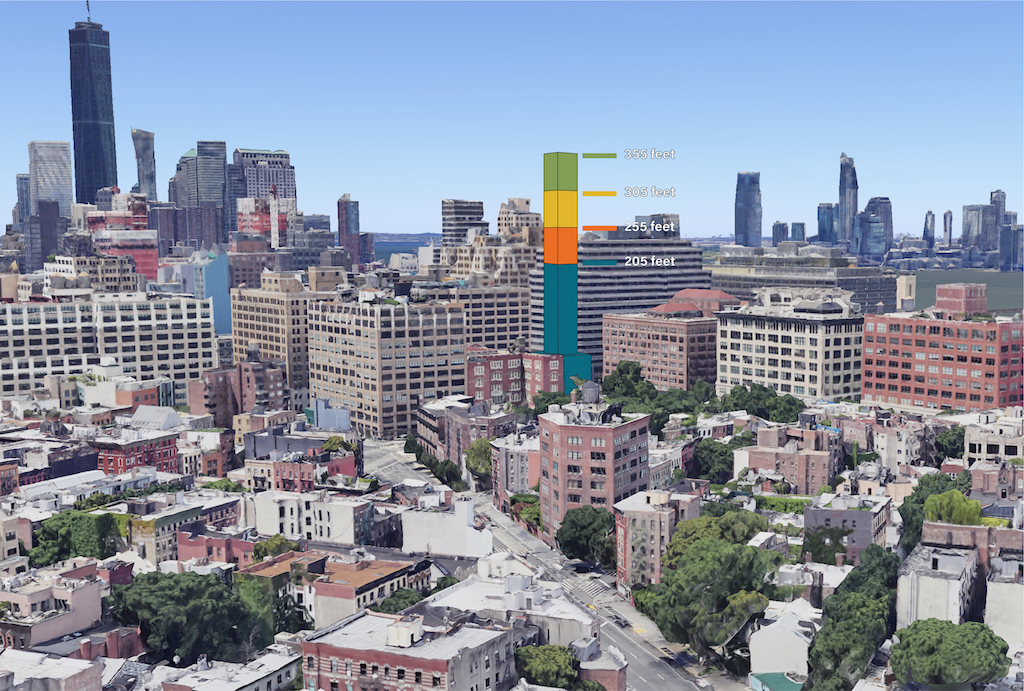
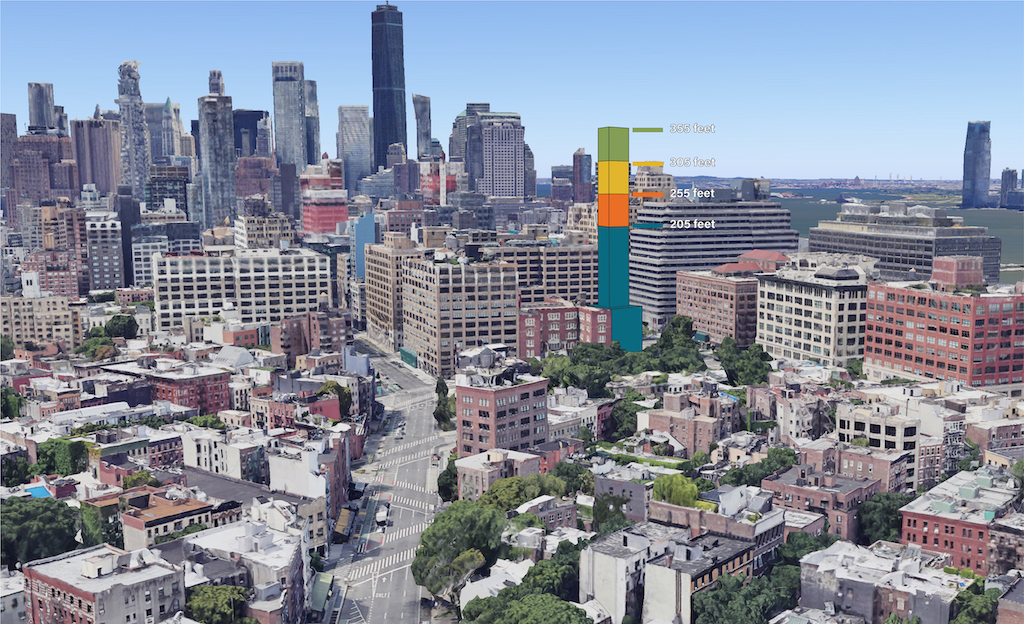
Then something odd happened. Community Board 2 kept asking the city to consider a larger and larger development here, seemingly — at least in part — based on the belief that it would help save the Elizabeth Street Garden, which was fighting the affordable housing plan in court. But the garden remains at risk, and whatever happens at 388 Hudson clearly won’t affect that process. The community board also began adding requests for large recreation spaces and other kinds of facilities at the Hudson Street lot, further increasing the likely size of the future building — again with little consultation with the surrounding community. The city expressed a willingness to accommodate, but indicated that this would mean a larger and larger building, now up to 350 feet tall. (The original plan would have been about one-third that height).
At this point, groups like Village Preservation began to push back. We were more than open to the originally planned 100 affordable housing units — or more — but wanted to ensure the development did not cast a long shadow or loom over the well-used JJ Walker Park across the street, or the adjacent Greenwich Village Historic District. We called for keeping the building as low and bulky as possible, minimizing height while maximizing affordable housing.
We urged that the development maintain the height of neighboring City-as-School at its base across from the park, and then step back and up from there to an ultimate height comparable to the large surrounding loft buildings, like the Printing House condo apartment building at 421 Hudson St. We estimated this design could produce up to double the originally planned number of affordable housing units. We urged this approach rather than any kind of tall tower. The community board passed a resolution that included many of these recommendations, as well.
Then…things went off the rails.
After many delays, the city held its one planned public meeting to solicit feedback on the plan, with Councilmember Erik Bottcher and Borough President Mark Levine introducing the session. At the Sept. 12 meeting, the city offered four potential versions of the plan, all with increasingly tall towers on the site (exactly the configuration we opposed). The tallest of these options, at 355 feet, would not only be the tallest ever in Greenwich Village, but double or more the height of surrounding buildings. Feedback about stepping the building progressively back from the park to avoid shadows or keep it as low and bulky as possible were ignored.
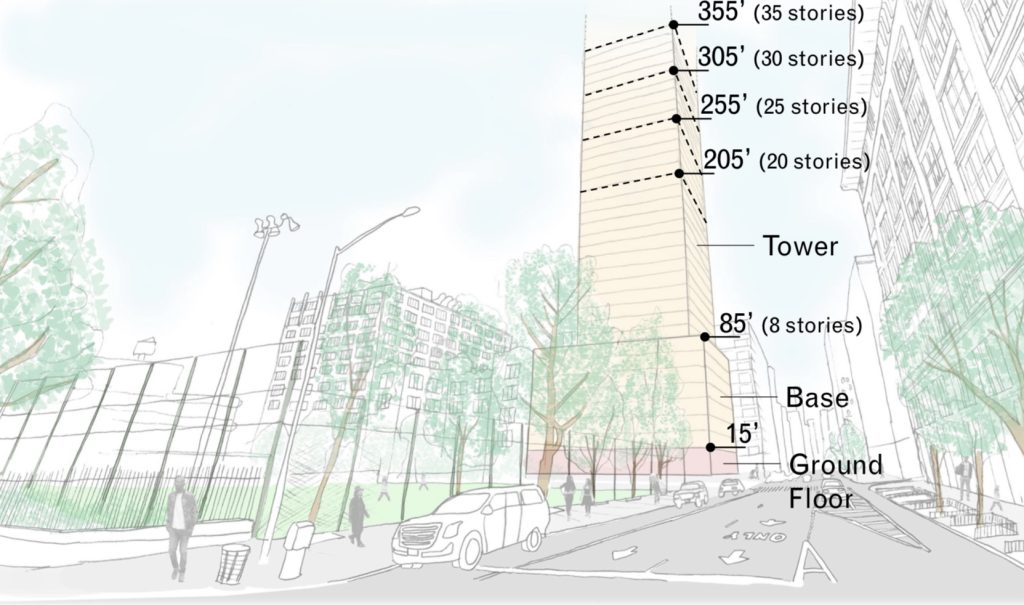
Worse, the images provided by the city of the proposed tower were so skewed and distorted to provide virtually no sense of how the building would actually appear. But the public was nevertheless given these images as their sole basis for providing feedback on the size and height of the plan.
Making matters worse, when questioned about the terms of the affordable housing, senior city officials said they could only require it remain affordable for 30 years, though other provisions would “discourage” developers from leaving the program after 30 years — cold comfort given the powerful financial incentives for a tall tower with unobstructed views over JJ Walker Park and the Greenwich Village Historic District to convert to luxury market-rate as soon as feasible. This shocking revelation was confirmed in a follow up e-mail between Village Preservation and city officials, with a promise that if there were any further details or clarifications, they would be provided. So far, none have been provided.
It should be noted that it is actually fully within the city’s power to explicitly require permanent affordability for this development.
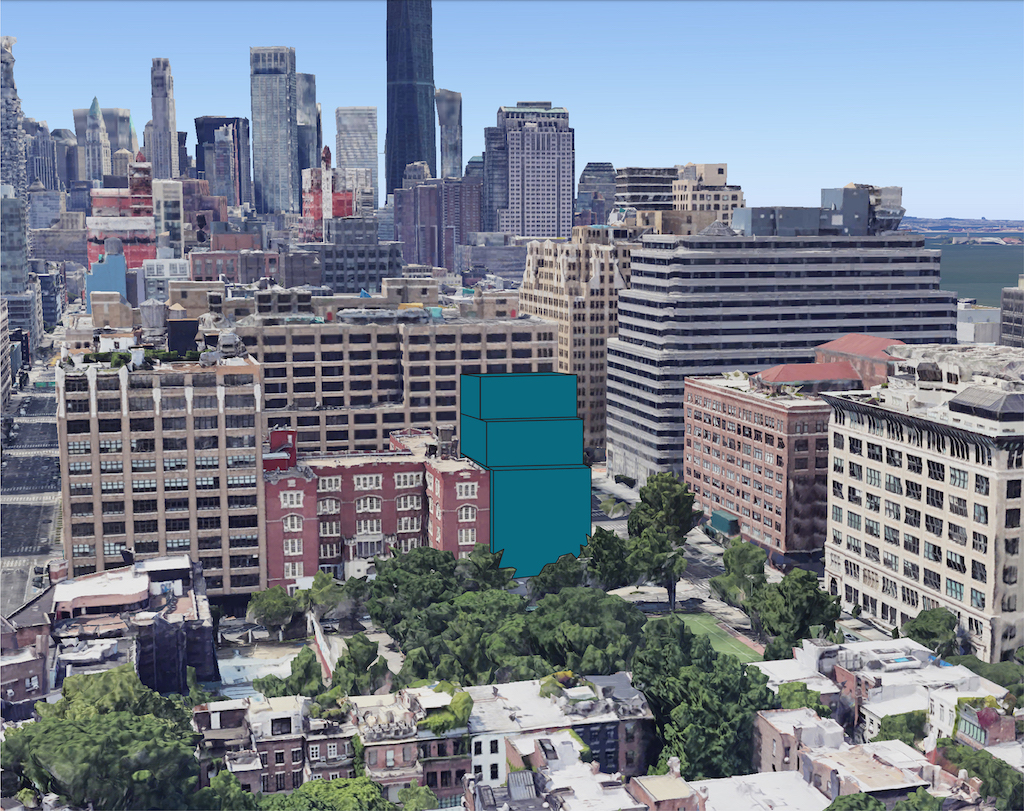
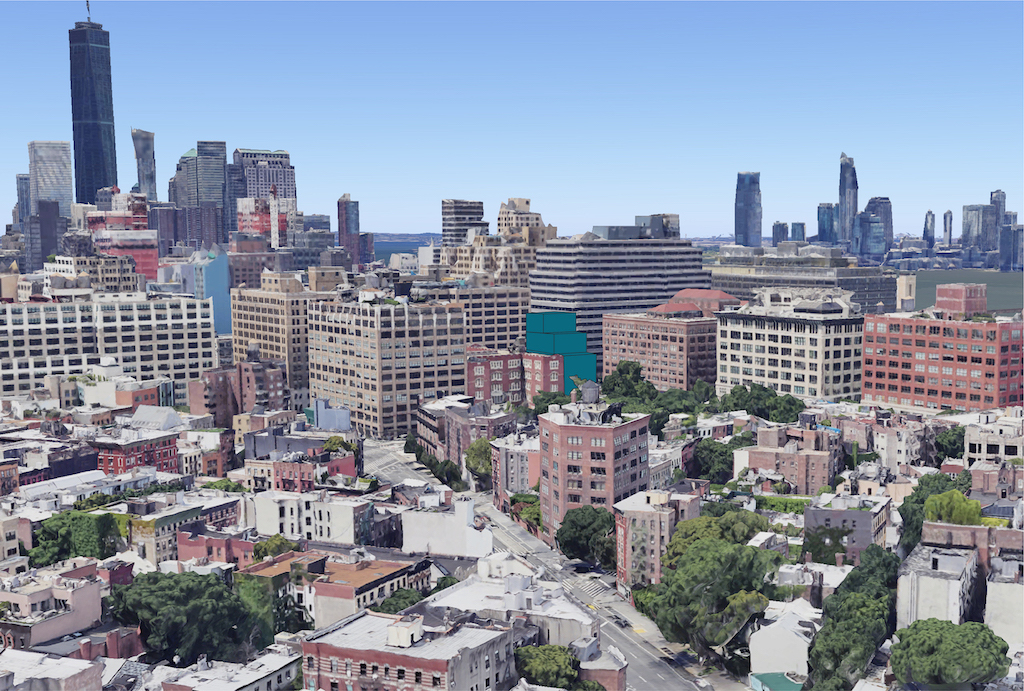
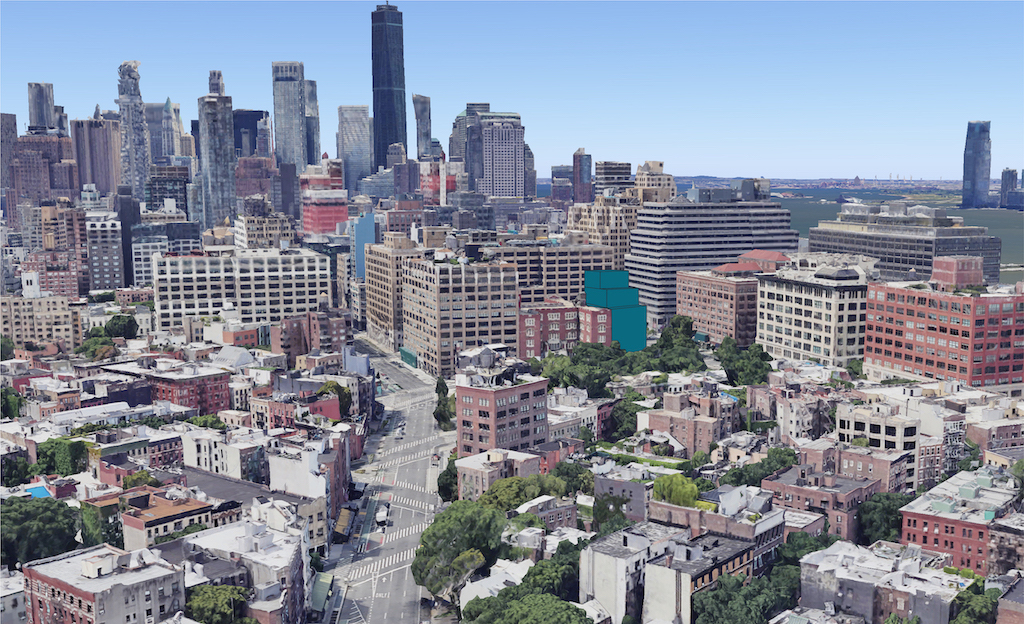
Village Preservation alerted the public to this new and disturbing information about the project, urging that residents demand the city require permanent affordability and provide realistic visualizations to guide public feedback; minimize the planned building’s height and maximize affordable housing; step any development back from the park to limit shadows; and keep the building’s ultimate height respectfully in context with its surroundings. What happened next seemed to only prove the bad faith with which the city was operating.
The Department of Housing Preservation and Development (the city agency in charge of the project) tweeted in response to our alert that “Affordability through reg agreement lasts for min 60 yrs and 45% of homes guaranteed in perpetuity through MIH [Mandatory Inclusionary Housing].” This directly contradicted what was said to multiple participants at the meeting and elsewhere and communicated in e-mail, and offered no documentation or explanation to substantiate this claim or its basis — sounding more like spin and damage control than any substantive change or commitment. (We’d only be too happy to learn that the city is, in fact, guaranteeing permanent affordable housing — but it has yet to produce any evidence to that effect, and lots to the contrary). We’ve asked for further details or documentation, but so far have received none.
H.P.D. also then claimed on Twitter that it was still interested in receiving public feedback, and that nothing had been decided yet about the design. But the agency then proceeded to immediately “like” a tweet in response that said, “We don’t need respectful height.” And the H.P.D. assistant commissioner for communications began attacking anyone on Twitter who called for the building’s height to be lower, or for the affordable housing to be guaranteed permanent. So much for a fair and open process.
The city and some others have tried to cow the public into unquestioned support for their plans by pointing to the very real need for affordable housing in our city and neighborhoods. The irony is it’s the city that every day contributes to and helps create that affordable housing shortage. These same city agencies have facilitated the loss of affordable rent-regulated housing at sites like 10-14 Fifth Ave., 44-54 Ninth Ave./351-55 W. 14th St., and 14-18 Gay St./18-20 Christopher St., refusing to preserve these buildings and their affordable housing over our and others’ strenuous objections. (The latter buildings were actually city-owned and then sold to a developer, who destroyed one and forced rent-regulated tenants out of the others.)
The city claims 388 Hudson St. is the only place new affordable housing can be built in the Greenwich Village area. The site is indeed a welcome potential location for affordable housing. But the city’s all-or-nothing dichotomy is as false as its skewed renderings of 388 Hudson St., and speaks to how it pressures communities to bear the burden for its failed policies and bad choices. The city could require that all-new, multifamily housing here and across the city include affordable units, as other municipalities around the country currently do. But it refuses to do so, instead hewing to big real estate’s demands that affordable housing requirements be limited to when developers are rewarded with being able to double or triple the size of their luxury tower developments as compensation — an outrageous and unnecessary price for doing so.
Some, like Councilmember Erik Bottcher, have said we can work out the details regarding the 388 Hudson development in the rezoning process that will eventually follow. But the reality is that will be too late to affect many of these issues, since there will be little flexibility at that stage to change this project or its terms. That’s why this needs to be resolved now, before the city releases its request for proposals (R.F.P.) to developers for the project, the impending next step.
Those who want to call for the city to require that the housing at 388 Hudson St. be permanently affordable, while minimizing the project’s height and protecting JJ Walker Park and the Greenwich Village Historic District from shadows and impacts, can do so here.
Berman is executive director of Village Preservation.

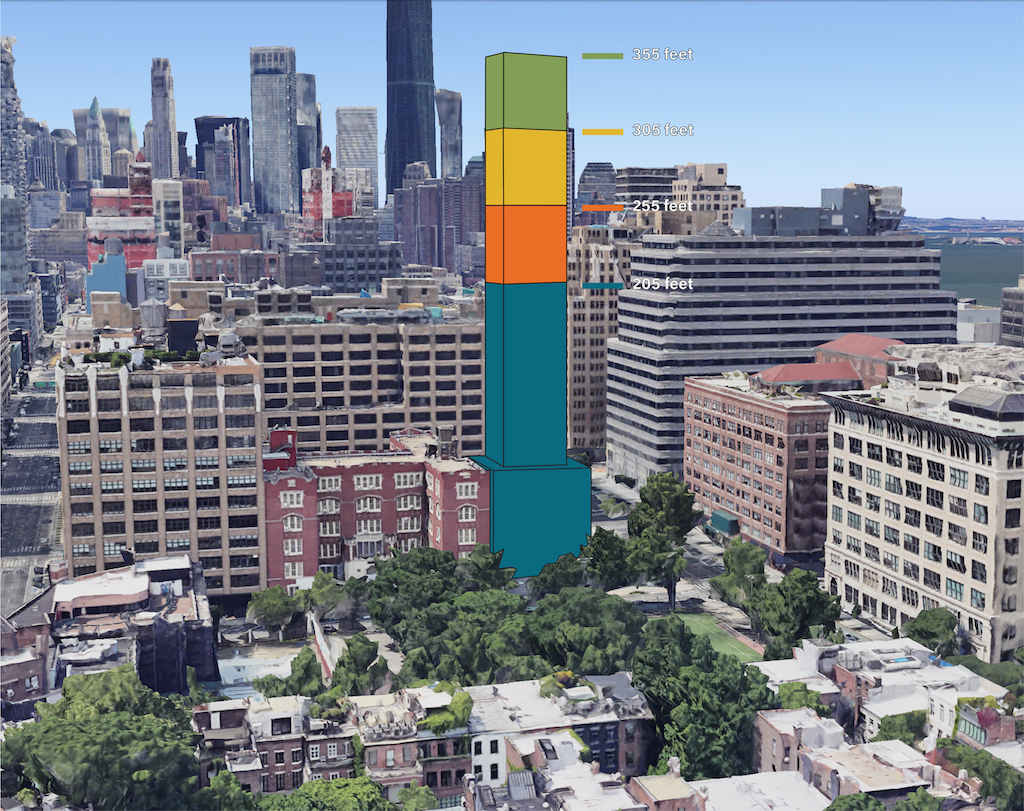
Is the author aware that the sun moves during the day, and a shadow cast is thus temporary, whereas the server housing shortage is perhaps more urgent and long-lasting?
Can the avoidance of a temporary shadow on a park really be more important than satisfying a need for more housing?
I am confused… if this land is currently City-owned, why couldn’t they require it to be affordable in perpetuity? Add a deed restriction to the lot before transferring it to the developer, or do a ground lease with an affordable housing developer.
Very important article. Sadly, the way our political system is designed, many of our elected officials have had large donations from real estate during their campaigns. Erik Botcher received big money from real estate and I believe that our state senator, Brad Hoylman-Sigal, used to be a real estate lawyer. I find both of these men likable but they owe their allegiance to real estate, so they have not worked in our favor and they continue not to.
Of all the building that has taken place during the last 40 years in Downtown Manhattan, Botcher insists on building affordable housing on the two spots left for parkland, the Elizabeth St. Garden and the water tunnel site at 388 Hudson St. Why wasn’t affordable housing included in any of the other developments? Because there is still real estate money to be made. Besides stealing desperately needed parkland that was promised to the community (Downtown has the least amount of real parks and tree canopy in all of NYC), the new building at 388 Hudson will cast a shadow in what used to be the only real park in the West Village (JJ Walker has been artificial-turfed and excluded from the community, so that it’s devoted for league sports use.)
The Hudson River park is a 30-foot-wide strip of grass along a noisy six-lane highway, where the lawn is used as a bathroom in the evening when the bathrooms are closed. The rest of what is called parks or green space are gardens at best, where people are not allowed on the grass. That leaves us with zero parkland.
Botcher came up with a waste of taxpayer dollars by lobbying to put trees in sidewalk pots and on roofs. The city doesn’t take care of the trees lining the streets we have now. What a farce if it wasn’t so injurious. We need clean, cool air and it is estimated that eight trees are required for every person in order to accomplish that. The people lose out again.
This is such fundamentally silly NIMBY handwringing. God forbid someone builds a tall building with lots of affordable housing. In Manhattan of all places! I live in the area and say build it as big as possible.
I live a few blocks from here and I honestly don’t care how tall it is, I just hope it includes as much affordable housing as it can, and that there’s space for shops and restaurants at street level so it doesn’t become a dead zone in the community.
Hats off to Andrew Berman, again bringing sense to this picture. Wonder who’s paying off whom?
Thank you, Carol.
This is disturbing on so many levels, among them:
—the fig leaf of phony “affordable housing” being used to cover what’s really a big for-profit real estate deal;
—ongoing blatant lies and distortions from the city with minimal opportunity for community input;
—a rush deadline to “Get Stuff Built” that subverts oversight and accountability.
All that’s missing is the record of the money that’s changed hands between the developer and the mayor’s cronies.
388 Hudson is a great location for affordable housing but not for the monster building the city is putting forth. The proposed building is grossly too tall for the site. And apartments in the building would not even be permanently affordable? The city needs to rethink its proposal and come up with something that respects the location by fitting within the context of the surrounding neighborhood and also ensures permanent affordability.
Thanks for your fact-based and clear explanation of this situation. The city needs to take a step back and truly and sincerely listen to the community
Such a well-researched and important article. Thank you for bringing light on this complicated matter.